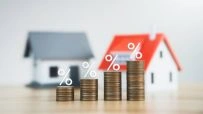Fixed Capital vs. Working Capital: Understanding the Key Differences
April 15, 2025

Did you know that nearly 30% of businesses fail due to cash flow mismanagement? One of the primary reasons behind financial struggles is the lack of clarity on capital allocation. Businesses require both fixed capital and working capital to sustain operations, expand, and remain profitable.
Understanding the difference between fixed and working capital is crucial for financial stability. While fixed capital is used for long-term investments, working capital ensures day-to-day operations run smoothly. In this blog, we’ll break down their definitions, key differences, and real-life examples to help you manage business finances effectively.
What is Fixed Capital?
Fixed capital refers to long-term investments that help businesses generate revenue over time. These assets are not consumed or sold within the operating cycle but are essential for business operations. Companies allocate fixed capital for acquiring physical assets, upgrading infrastructure, or implementing advanced technology that provides long-term value.
Examples of Fixed Capital
- Manufacturing Equipment: A car manufacturing company investing in automated robotic arms and conveyor belts to improve efficiency and production speed.
- Real Estate: A retail chain purchasing commercial properties for stores or warehouses to expand operations and ensure long-term stability.
- Technology Infrastructure: A software company investing in high-performance servers, cloud computing systems, and cybersecurity measures to enhance operational efficiency.
- Vehicles: A logistics company purchasing a fleet of delivery trucks to streamline supply chain management and reduce transportation costs.
Key Characteristics of Fixed Capital
- Long-term Investment – Fixed capital is allocated for durable assets that contribute to business growth over several years.
- Depreciation Applies – Fixed assets lose value over time due to wear and tear, requiring companies to account for depreciation in financial statements.
- Not Easily Liquidated – These assets cannot be quickly converted into cash, making fixed capital a long-term commitment.
What is Working Capital?
Working capital is the capital needed for day-to-day business operations. It represents the difference between a company’s current assets (cash, accounts receivable, inventory) and current liabilities (short-term debt, accounts payable). A healthy working capital ensures smooth business operations, timely payments to vendors and employees, and sufficient cash flow to handle unexpected expenses.
Examples of Working Capital
- Raw Materials: A clothing brand purchasing high-quality fabric and dyes to manufacture garments, ensuring continuous production.
- Salaries: Monthly payroll payments to employees, ensuring workforce motivation and productivity.
- Utility Bills: Covering electricity, internet, and water bills required for business operations, maintaining seamless workflow.
- Short-term Debt Payments: Repaying business loans or credit lines that finance immediate operational needs and prevent financial bottlenecks.
Key Characteristics of Working Capital
- Short-term in Nature – Working capital is used to cover immediate expenses and keep the business running efficiently.
- Highly Liquid – Unlike fixed capital, working capital consists of assets that can be quickly converted into cash.
- Directly Impacts Cash Flow – A positive working capital ensures smooth operations, while a deficit can lead to financial distress.
Fixed Capital vs. Working Capital: A Detailed Comparison
| Feature | Fixed Capital | Working Capital |
| Definition | Long-term investment in business assets | Funds used for daily operations |
| Timeframe | Used over several years | Used within a short-term cycle |
| Liquidity | Low liquidity | High liquidity |
| Examples | Machinery, land, office buildings | Salaries, rent, raw materials |
| Financial Impact | Supports business growth and expansion | Ensures smooth day-to-day operations |
Why Are Both Fixed and Working Capital Important for a Business?
Fixed Capital Enables Growth and Expansion
Businesses need fixed capital to invest in essential assets that provide long-term benefits, such as modernizing equipment or opening new branches.
Working Capital Ensures Business Stability
Adequate working capital ensures that businesses can pay for operational expenses like rent, wages, and supplier payments, preventing disruptions in operations.
Maintaining a Balance Between Fixed and Working Capital is Essential
A company must strike the right balance between fixed and working capital to avoid liquidity crises or underutilization of resources.
Final Thoughts
Both fixed capital and working capital play a vital role in business success. While fixed capital helps in expansion and long-term sustainability, working capital ensures smooth daily operations. Striking the right balance between the two is key to financial stability and business growth.
Take your business to the next level with Ujjivan Small Finance Bank MSME Loans. We have a host of MSME products tailored for your unique business growth needs. Additionally, we offer MSME Overdraft facilities for urgent business capital requirement. Browse through our suite of products and apply today!
FAQs
1. What is the primary difference between fixed capital and working capital?
Fixed capital is used for acquiring long-term assets that help businesses grow over time, whereas working capital covers short-term financial obligations necessary for daily operations.
2. Can a business survive without fixed capital?
Some service-based businesses, such as consulting firms, require minimal fixed capital, while industries like manufacturing and retail heavily rely on fixed capital for equipment and infrastructure.
3. Why is working capital important for businesses?
Working capital ensures that businesses have sufficient funds to manage daily expenses, maintain smooth operations, and prevent financial strain caused by delayed payments or cash shortages.
4. How do businesses calculate working capital?
Working Capital = Current Assets - Current Liabilities. A positive working capital indicates financial health, whereas a negative one may signal liquidity issues.
5. What happens if a company has negative working capital?
Negative working capital means the company lacks sufficient short-term assets to cover liabilities, which may lead to delayed payments, debt accumulation, and potential insolvency.
6. How do businesses raise fixed capital?
Companies raise fixed capital through equity investments, long-term loans, retained earnings, and government grants to finance asset acquisitions and expansion.
7. Is inventory part of fixed capital or working capital?
Inventory is part of working capital because it consists of goods or materials that are sold or used within a short period to generate revenue.
8. Can a company have too much fixed capital?
Yes, excessive fixed capital with insufficient working capital can lead to cash flow problems, making it difficult to cover operational expenses.
9. How can a company improve its working capital?
Businesses can improve working capital by optimizing inventory turnover, negotiating better payment terms with suppliers, and maintaining an efficient accounts receivable process.
10. What industries require high fixed capital investment?
Industries like automobile manufacturing, construction, telecommunications, and energy require substantial fixed capital for infrastructure, machinery, and technology investments.
Latest Blogs

Telangana Housing Board & KPHB Colony: A Guide to Affordable Urban Housing in Hyderabad
March 14, 2025
As Telangana continues its rapid urbanisation journey, two key housing entities—Telangana Housing Board (THB) and Kukatpally Housing Board Colony (KPHB)—have played critical roles in shaping the state's real estate ecosystem.

Does Checking CIBIL Score Frequently Lower Your Credit Points?
April 07, 2025
Imagine you're planning to apply for a home loan, a credit card, or even a car loan. Naturally, you want to ensure your CIBIL score is in good shape before proceeding.

Explained: Can NRIs Buy an Agricultural Land in India?
April 03, 2025
Real estate investment is often a top priority for Non-Resident Indians (NRIs) looking to retain strong financial ties to India.

How to Improve Your CIBIL Score from 600 to 750: A Step-by-Step Guide
April 02, 2025
Your CIBIL score is like your financial reputation—banks check it before approving loans or credit cards. If your score is hovering around 600, you might face difficulties in securing credit or may get loans with higher interest rates.

What Happens When You Leave Your Savings Account Unused?
April 01, 2025
Imagine waking up one day to find that your hard-earned money is locked away and inaccessible. Sounds stressful, right? This is precisely what happens when you leave your Savings Account inactive for too long.



